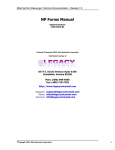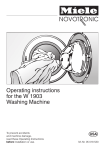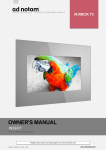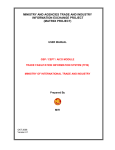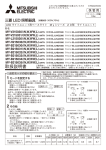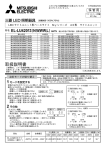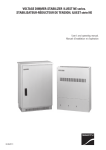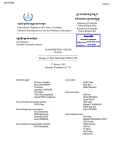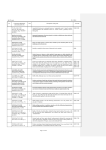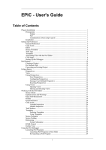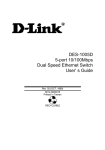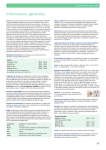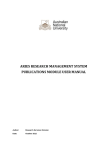Download duty suspension scheme - Documents & Reports
Transcript
Public Disclosure Authorized Public Disclosure Authorized 38791 Cambodia Investment Board Public Disclosure Authorized Public Disclosure Authorized Duty Suspension Scheme May 29, 2006 FIAS Leaders in Investment Climate Solutions International Finance Corporation and The World Bank Disclaimer The Organizations (i.e., IBRD and IFC), through FIAS, endeavour, using their best efforts in the time available, to provide high quality services hereunder and have relied on information provided to them by a wide range of other sources. However, they do not make any representations or warranties regarding the completeness or accuracy of the information included in this report, or the results which would be achieved by following its recommendations. Cambodia DSS final 29 May, 2006.doc Contents About this report ................................................................................................1 Abbreviations used in this report ...........................................................1 Executive summary............................................................................................2 The need for a Duty Suspension Scheme (DSS) ...................................2 Design of a web-based DSS system.......................................................2 Formal implementation of the DSS .......................................................3 1 Introduction and background .................................................................4 Current situation facing garment exporters............................................4 Experience with duty suspension schemes ............................................6 2 Objectives of the Cambodian DSS ........................................................8 Background ............................................................................................8 The advantages to Cambodia of a DSS..................................................8 Broad paramenters of the DSS.............................................................10 Outputs and intended outcomes of the DSS project ............................14 3 Design parameters of the DSS .............................................................15 Administration of the scheme ..............................................................15 Sector coverage....................................................................................15 Operational parameters of the proposed DSS......................................16 4 Implementation of the DSS..................................................................18 Design of DSS software.......................................................................18 Initial training of staff in operation of DSS .........................................19 5 Next steps.............................................................................................20 Hardware required for implementation................................................22 Appendices Appendices.........................................................................................................3 A Detailed list of hardware required........................................................22 B DSS web program screen shots............................................................23 C Exporters Guide*to the Cambodian Duty Suspension Scheme ...........37 Overview of the Cambodian DSS........................................................37 Cambodia DSS final 29 May, 2006.doc How to apply to become a Member.....................................................37 Exports under the DSS.........................................................................39 Duty Suspension Scheme- Exports..........................................39 Imports under the DSS.........................................................................40 Duty Suspension Scheme- Imports..........................................41 How to obtain a list of the approved exports and the approved imports ..............................................................................................................41 Request for Changes to the Approved Lists ........................................42 Requests for Changes to the Entitlement Proportion...........................42 Requests to Transfer Credits................................................................43 Reports of your status under the DSS ..................................................43 Further inquiries...................................................................................44 Cambodia DSS final 29 May, 2006.doc About this report This report was prepared following a request from the Cambodian Government for assistance to design and implement a Duty Suspension Scheme (DSS) for garment exporters. The project was jointly funded by FIAS and the Agence Francaise de Developpement. The report encompasses an analysis of the current situation facing garment exporters in Cambodia and an assessment of the need for a DSS. Consideration is given to similar schemes internationally including other schemes implemented by FIAS. The advantages of implementing a DSS in Cambodia are discussed, and the parameters for such a scheme are outlined, including administration, sector coverage and operational parameters. The report also describes the DSS software that has been designed, the initial training that has been provided, and the next steps required for full roll out of the DSS. Cambodia DSS final 29 May, 2006.doc About this report 1 Abbreviations used in this report The ASEAN version of the Harmonized Tariff Nomenclature to which all ASEAN Members are committed to using for Customs classification ASYCUDA Automated System for Customs Data. Customs data base developed by the UN and proposed for use in Cambodian Customs. ASYCUDA is essentially a SAD data base. The version to be introduced in Cambodia is ASYCUDA++. Board of Investment, Thailand BOI Cambodian Investment Board CIB Cambodian Software Firm contracted to supply the DG DSS software Duty Suspension Scheme- DSS1, DSS2, DSS DSS3…are DSS Forms referred to in the Software Entitlement Proportion. Ratio of value of EP concessional imported raw materials to value of exports achieved. European Union EU Garment Manufacturers Association of Cambodia GMAC Information Technology IT Less Developed Country LDC Electronic Raw Materials Tracking System RMTS provided in Thailand by BOI Single Administrative Document (Clearance SAD Documents used by Customs) United States Agency for International USAID Development Secure Sockets Layer. A protocol developed by SSL Netscape for transmitting private documents via the Internet Value Added Tax VAT AHTN Cambodia DSS final 29 May, 2006.doc Abbreviations 1 Executive summary The need for a Duty Suspension Scheme (DSS) The Cambodian garment export industry, which is a key component of the Cambodian economy, has historically been constrained by administrative barriers that limit exports and imports. For this reason a Duty Suspension Scheme (DSS) which would allow Cambodian garment exporters, who rely heavily on imported inputs, to have access to these inputs on a tax free basis has been considered. The DSS allows exporters to import tax free approved imported inputs based on their export performance. Thus for every dollar of exports achieved a Cambodian garment exporter would be entitled to import, tax free, about 70 cents of approved imported inputs. Approved imports are defined in terms of eight digit AHTN (ASEAN Harmonized Tariff Nomenclature) codes, the tariff classification used by Cambodian Customs. Design of a web-based DSS system Design of the system has involved extensive consultation with governemnt officials and exporters. A feature of the system is that it is managed using web based software that has been specifically designed for Cambodian requirements. The system provides exporters with a transparent and flexible process to access the imported inputs they require on a tax free basis. At the same time it provides improved government revenue controls, is fully auditable, and has been designed to be integrated with Customs processing procedures. The Government indicated a preference for the system to be administered by the Cambodian Investment Board, with input from Cambodian Customs, who will audit the Scheme. Issues such as requirements to have access to imported inputs prior to exporting, transfer of tax free import rights between firms, and possible expansion of the Scheme to other exporting sectors have been discussed with Government officials and flexible software that enables these issues to be handled has been developed. A hands on introduction to the DSS management software has been provided to selected Customs and CIB officials. Currently the feedback that these officials have now provided is being incorporated into the management software. See http://www.multidude.net/clients. For review use user name <dick> and password <testme> can be used to gain entry Cambodia DSS final 29 May, 2006.doc Executive Summary 2 Formal implementation of the DSS It is now necessary for the Government to make a formal decision to implement the DSS. Once this is done, and the Government makes an announcement about the DSS, it will be possible to draft legislation and complete the software to reflect the decisions made relating to administrative procedures, operating rules such as transfers, and reporting requirements for the various agencies involved. Once the Government has taken the formal implementation decision there are a few matters which need to be finalised. Hardware needs to be installed within CIB; arrangements need to be made to maintain software and hardware; legislation will need to be drafted and introduced, and some minor technical issues raised by CIB and Customs need to be solved. Cambodia DSS final 29 May, 2006.doc Executive Summary 3 1 Introduction and background Current situation facing garment exporters The Cambodian garment industry has expanded rapidly over the past decade. It now accounts for more than 80 percent of Cambodian merchandise exports. Garment exports have expanded from less than $US5 million in 1994 to $US2.0 billion in 2004. The industry is primarily foreign owned with a heavy reliance on imported inputs. There are about 220 factories currently operating in Cambodia. They employ about 260,000 workers. Between 85 and 90 percent of these are female. 1 Most of the output of the Cambodian garment industry goes to lucrative developed country markets. More than 70 percent of exports are to the US whilst the EU takes about 27 percent of Cambodian exports. In the US, Cambodian manufacturers supply such well known brands as The Gap, Banana Republic, and Polo. In the period prior to 2005, the quota regime which limited exports had provided an environemt where administrative barriers and corruption flourished. The major impediments to the growth of the Cambodian garment industry over the quota regime were supply side barriers, not the limits to demand imposed by the quota regime. Cambodian garment manufacturers were often obliged to pay informal payments to officials in order to be allocated a share of the Cambodian quota. The difficulties experienced by exporters in obtaining quota authorisation from the Cambodian authorities meant that, over the quota period, average quota utilization was only 63 percent. 1 Cambodia has a unique ILO inspection arrangement- Better Factories Cambodia- that inspects Cambodian garment factories and ensures that they meet core labour standards in such areas as child labour, forced labour and sexual harassment. Cambodia DSS final 29 May, 2006.doc 1 Introduction and background 4 Since the quota regime has been lifted, Cambodian garment exports to developed country markets have increased. Exports to the lucrative US market increased by about 16 percent in value terms in the first year of the quota free regime. 2 However, this expansion has been in a period when Chinese clothing exports have been constrained. Ethnic Chinese factory owners with clothing factories in Cambodia represent a large part of the industry. Many of them may decide to switch production to China as controls are lifted on Chinese exports to developed country markets. A further competitive challenge to the Cambodian industry will arise when Vietnam becomes a member of the WTO and the quotas which currently limit their clothing exports are lifted. Not surprisingly, available evidence suggests that the cost of manufacturing garments in Cambodia is roughly about 10 percent to 20 percent higher than more competitive producers, such as China and Vietnam.. Discussions with the Garment Sector, in particular the Garment Manufacturers Association of Cambodia (GMAC), suggest that the higher production costs in Cambodia can be attributed to many factors including quality and cost of labour and management, transport costs and administrative barriers Industry infrastructure requires substantial new investment. A recent USAID study 3 of the Cambodian garment industry in the post quota environment indicated that about 7 percent of factories would currently be best practice enterprises; more than 75 percent have potential to be upgraded to competitive enterprises and about 18 percent will find it difficult to compete in the post quota environment In addition, Cambodia must import about 70 percent of the inputs required to produce its clothing exports. This means that high import/export clearance charges, including both official and unofficial charges, impact on the competitiveness of Cambodian clothing exports. If Cambodia is to hold market share in the garment industry in the face of the global challenge outlined above, the Government must, at a minimum, ensure that its markets, institutions and procedures provide automatic, frictionless access to world priced inputs. The proposed Duty Suspension Scheme (DSS) is designed to provide such automatic, frictionless access within the authority provided by the Law on Investment. 2 There has been significant structural change in the Cambodian post quota market. Exports, such as cotton nightwear have decreased while exports of women’s slacks and blouses and men’s trousers have increased significantly 3 USAID: Measuring Competitiveness and Labour Productivity in Cambodia’s Garment Industry, June 2005 Cambodia DSS final 29 May, 2006.doc 1 Introduction and background 5 Experience with duty suspension schemes Systems designs which protect the revenue streams of the government and permit frictionless customs clearance for the exporters are readily available. Inward processing schemes are used across Europe and Asia. In the EU duty suspension arrangements for activities such as pharmaceuticals operate under Article 28 of the Treaty of Rome. In less developed countries duty suspension schemes operate to enable exporters to import duty free the materials that are required for export.4 India has operated a widely supported Duty Entitlement Pass Book Scheme to allow exporters duty free access to imported inputs. Both Thailand and Fiji operate good schemes, while Australia has also recently implemented a system of duty suspension for exporters. Thailand’s Investment Act allows for approved exporters to receive duty exemptions on imported inputs to exported goods. The scheme is administered by the Thailand Board of Investment (BOI). However more than 10 years ago the BOI found that the burden of administering duty exemptions was such that it could not process requests in a timely manner. It found a solution in an unusual partnership with the private sector, the formation of an Investor Club to which BOI approved investors may belong.. The Investor Club charges a membership fee. The main service it provides is the administration of Exporters duty free exemptions through an electronic Raw Materials Tracking System (RMTS). It charges 40 Baht (about US$1) per shipment processed, a fee that is fixed no matter what the shipment size is, and processing a duty exemption in less than four hours. There are about 1000 members who specifically use the RMTS service only.. By its charter, the Investor Club had more flexibility to hire personnel than the BOI does as the latter is constrained by the budgetary norms of the Thai Government. At present, there are about 40 relatively well paid employees in the Club. The BOI could not possibly process the documentation faster than the Investor Club could, and a number of promoted companies recognize and appreciate this. 4 Ideally countries can raise revenue without the use of tariffs, however in some less developed countries, where the costs of raising revenue through other measures such as income taxes are high, it is necessary to use tariffs as part of the revenue collection mechanism. It is in these case that duty supension can be considered. A DSS becomes particularly attractive in small LDCs that may be competitive in labor intensive assembly processes but not have a comparative advantge in production of components. For example, both Cambodia and Fiji which produce garments for developed country markets are competitive in the labor intensive final assembly of garments but do not have the economies of scale to produce high quality inputs, such as cloth and clothing accessories (zips, buttons, fasteners etc). A DSS provides the opportunity for garment exporters in these countries to have access to world class components at international prices. Cambodia DSS final 29 May, 2006.doc 1 Introduction and background 6 The Fiji scheme was implemented with assistance from FIAS. It is administered by the private sector, taking the Thai scheme as an example, thus minimising the cost to government; and in its next revision, will be web-based, thus further lowering administration time and ensuring that shipments are cleared rapidly. Latest reports from Fiji suggest that the scheme is operating efficiently with significant reductions in the time required to clear authorized imports. Cambodia DSS final 29 May, 2006.doc 1 Introduction and background 7 2 Objectives of the Cambodian DSS Background This FIAS project has been designed to complement the proposed World Bank’s Cambodian “Trade Facilitation and Competitiveness Project”. It has been conceived as an investment project funded by an IDA grant of US$10 million, paired with Government and donor resources of an estimated $2 million. One of the key elements will be a “Trade Facilitation Component which includes: • the design and implementation of a Single Administrative Document 5 (SAD) incorporating all information needs to facilitate trade; • reorientation of CamControl away from mandatory inspections and toward new functions; • the architectural design and implementation of a Single Window process; and • Customs modernization within a streamlined cross-agency procedure. The advantages to Cambodia of a DSS The beneficial outcomes arriving from implementation of the DSS, which has been specifically designed for Cambodia, are summarised below. • A DSS helps exporters to be internationally competitive by allowing them to import inputs at internationally competitive prices. In order to export to developed country markets, it is important to use world class inputs, such as cloth and clothing accessories, including fasteners and buttons. In small countries, such as Cambodia, the comparative advantage of exporters is centred on the final labor intensive sewing process and, if Cambodian exporters are to produce high quality garments acceptable in developed country markets at competitive prices, they must have access to high quality components at world prices. These inputs are not available domestically in countries such as Cambodia. 5 The Single Administrative Document (SAD) is an initiative of the World Customs Organization to design a standard single page clearance document for clearance purposes that can be used for all international transactions. It has been supported by ASEAN and will be used in the upgraded Cambodian Customs system. For imports seeking tax free status from the DSS, a DSS form authorising tax free clearance would be attached to the relevant import SAD so that the SAD would be processed in the normal way. There is a box on the SAD relating to duty concessions which would be cross reference to the DSS for audit purposes. . Cambodia DSS final 29 May, 2006.doc 2 Objectives of Cambodian DSS 8 • A DSS reduces the revenue loss from illegal duty free imports that would be used on the domestic market. At present in Cambodia the records held by Customs make it difficult to ensure that only exporters receive tax concessions on imported inputs. The system of obtaining duty concessions in Cambodia often involves informal arrangements between importers and officials. While most clothing inputs on the approved list have a total tax of 17.7 percent (the combined, multiplicative effect of a 10 percent VAT and a 7 percent tariff), there are some items that have a tax of 48.5 percent 6 . This provides a big incentive for producers on the domestic market, who also use these items to evade duty. A DSS has detailed records of imports and exports for all firms using the system and makes it more difficult for an importer who is not a legitimate exporter to obtain tax free imports. • A DSS speeds up clearances. This is important in fashion goods where foreign orders are often required to meet time deadlines. At present considerable delays can occur if inputs have to be imported that are not on the narrow individual firm approved lists that currently exist. 7 • A DSS reduces administrative costs for both the private sector and government. The administrative costs to exporters in Cambodia are well known 8 . A complaint from very senior officials in the Government was that when delays occurred, exporters lobbied these officials and this took up time that they could better spend in other areas. The Cambodian DSS, which is web based, means that for most clearances there are no special procedures requiring interaction between exporters and the government. • A DSS provides the exporters with greater flexibility. There is no need to get special approval for changes in the nature of exports (eg changes from men’s shirts to women’s dresses as there is now). Exporters will find that the new single approved list for garments, which currently covers 445 items, will enable them to make changes in their product mix without need to consult either CIB or Customs. 6 For example slide fastener ribbon, webbing, labels, braids, quilted textile pieces and crocheted parts for garments all have tariffs of 35 percent plus a 10 percent VAT. The logic of the Cambodian tariff structure which classifies these particular inputs as high tax items is not clear. 7 There are 3 problems with the current approved lists. First, they are relatively narrow and are tailored for individual needs which means that if an exporter wants to change the type of exports, he will require changes to his particular approved list. Whilst established firms with good informal contacts find that the delay involved is not great, newer firms have more difficulty. Second, no checks are maintained between the amount of exports a firm might achieve and the amount of tax free imports received. Third, the lists are not in terms of Customs codes so it is difficult for the Customs officer to determine whether an imported item should receive tax free status. 8 Informal payments during the quota era have been estimated to amount to about 7 percent of total sales. Cambodia DSS final 29 May, 2006.doc 2 Objectives of Cambodian DSS 9 • A DSS assists new entrants. Under the current less formal system, large existing manufacturers with well established networks and contacts within the bureaucracy are heavily advantaged in importing inputs. • A DSS is transparent because it reduces government administrative discretion and applies the same rules to all exporters. The new web based system with transparent rules that apply to all exporters reduces the value of informal contacts. • A DSS enables government to audit the costs of concession. The reports generated by the web based system are designed to provide the information required to audit the DSS. It is impossible to audit the current arrangements.It needs to be pointed out that a DSS will not reduce all illegal activities although it will make it more difficult for illegal activities to operate. While some individual companies may misuse import credits, those firms with medium to long term plans to operate in Cambodia would be unlikely to misuse the DSS. It should also be noted that not all garment exporters will welcome the DSS. Those well established firms with extensive informal networks within the bureaucracy will prefer the current less formal arrangements. This was the experience in Fiji, where some of the larger exporters with special arrangements prior to the introduction of the DSS, were importing duty free inputs several times the total value of their exports. These firms opposed the introduction of the DSS into Fiji. Now that it has been successfully introduced in Fiji, the overwheming majority of exporters support the DSS. The Cambodian experience is likely to be similar. Broad paramenters of the DSS Under the Duty Suspension Scheme proposed for Cambodia, materials imported for processing by garment exporters will not be subject to import taxes. Exporters who become Members 9 of the DSS receive credit for approved exports achieved. We expect that the Cambodian DSS will have about 200 Members. In the first instance the DSS will be confined to Garment exporters. 9 To become a Member, Firms must first apply to the CIB for Membership. They are given a temporay user name and password which enables them to enter the sytem and complete on line a Membership Application Form. This form goes automatically (via the software) to Customs and CIB for vetting. All Members must supply details requested, including a tax ID. In the process of designing the DSS it has become apparent that there are a number of garment exporters without a tax ID. The DSS will act as a strong incentive for tax registration Cambodia DSS final 29 May, 2006.doc 2 Objectives of Cambodian DSS 10 The Scheme would be value based and would be designed to operate like a bank account. Exports will build up the balance of credits to be used for duty free imports by exporting items on the approved export list and imports from the approved imports list will run down the balance of credits. Exporters will be entitled to import tax free from the approved list of imports, based on the ($) value of approved exports achieved. Details regarding the improved export and import lists that have been compiled are contained in the Table below. APPROVED EXPORT AND IMPORT LISTS: GARMENTS, FOOTWEAR, AND TEXTILES –CAMBODIA Sector Exports/ Imports Number of Items (a) Chapters from which Items are drawn (b) Approved Exports Approved Imported Inputs 508 445 61, 62, 63, 65, 66 39, 44, 48, 50, 51, 52, 53, 54, 55, 56, 58, 59, 60, 61, 63, 65, 66, 68, 70, 73, 82, 84, 96 Approved Exports Approved Imported Inputs 31 69 64 32, 40, 41, 42, 44, 63, 64, 68, 73, 76, 79, 82, 84, 96 Approved Exports 648 Approved Imported Inputs 404 50, 51, 52, 53, 54, 55, 56, 57, 58, 59, 60 32, 38, 39, 44, 48,50, 51, 42, 53, 54, 55, 76, 82, 84 Garments Footwear Textiles Notes: (a) Items are classified on the basis of the ASEAN version of the Harmonised Tariff Nomenclature (AHTN). They are classified at the eight digit level (b) Not all items in each Chapter are included Note that there is a facility within the DSS software for an authorised officer to amend- that is add or exclude 8 digit codes- any list. In the initial implementation the Footwear and Textile sectors will not be included in the DSS Cambodia DSS final 29 May, 2006.doc 2 Objectives of Cambodian DSS 11 Thus for every dollar of approved exports achieved, a Member would be provided credits to import, tax free, an amount equal to the proportion of approved imported inputs required to produce exports. This is called the Entitlement Proportion (EP). The EP would vary depending on type of activity undertaken. Some activities that would require a large amount of imported inputs to produce exports would have higher EP's than others. In order to establish an appropriate EP, investigations were conducted as to the proportion of export selling value represented by the cost of imported inputs. Two approaches were adopted . The first was to identify through Customs records the value of imported inputs for the garment industry and express this as a percentage of total garment exports as recorded by Customs. These calculations indicated an average EP of 70 to 80 percent. However this overstates the true EP because some imported components go into the domestic garment market rather than exports. It should also be noted that Customs records at the present time are unreliable. A second approach was to consult with garment exporters. Their figures indicate that an average EP for men’s shirts was about 65 percent while an average EP for women’s dresses was about 70 percent. Garment manufacturers in Cambodia indicated that they could work with an EP of 70 percent. 10 Based on this information, it was determined that EPs for garments in Cambodia would be in the 70 percent range. 11 Thus every dollar of exports would entitle an exporter to import, tax free, about 70 cents of imported inputs from the approved list of imports. The Scheme recognises that import of materials must precede the production and subsequent export of the goods and that new entrants, in particular, may require imports before exports are achieved. Credits would be advanced based on trading history or documented orders. These advance credits would be acquitted on a monthly basis over a 12-month period against exports. Advance credits would normally be an issue to be set at time of Membership. While some established firms may not require credits, it is suggested that as a rough rule they be set at two-thirds of the value of expected annual exports. 10 The software allows an exporter to approach the administrators at CIB and seek to have their EP amended. An authorised administrator, with the appropriate password, can amend the EP of an individual firm. Full details of any changes to EPs are stored within the software in the event of an audit.. 11 Minor differences between firms could be readily resolved if exporters were able to transfer credits from one firm to another. The option to include a transfer facility has been incorporated into the DSS software, although Governemnt has not decided whether it should be allowed under the DSS.. Cambodia DSS final 29 May, 2006.doc 2 Objectives of Cambodian DSS 12 The Scheme has been computerized and requires minimum paperwork. The software creates an auditable record trail. A firm wishing to participate in the scheme would apply and obtain approval from the CDC, the administrative body charged with administering duty exemptions to exporters under the Law on Investment. Membership conditions include the requirement that the firm has a Tax Identity number. One of the features of the DSS that has been designed for Cambodia is that it is value based and it does not involve ex-post refunds. In some countries, such as Pakistan, there have been quantity based schemes, as distinct from value based import concession schemes for exporters. Under these arrangements all the import requirements for each type of export have to be individually specified. For example, for each type of men’s shirt to be exported the quantities required for import, such as number of metres of specified cloth, number of buttons, etc must be approved. If an exporter makes a decision to change designs there is a requirement for a factory inspection to determine the changed requirements for the new type of shirt. Decisions to switch from men’s shirts to some other item, such as women’s dresses will require detailed factory inspections and the exporter will have to commit to certain agreed designs. The lack of flexibility in these arrangements imposes considerable costs on exporters. Other countries have used an ex post arrangement where an exporter imports materials, pays all the import taxes, and then, after export of the finished product, claims a duty drawback. The problem with these arrangements is that Customs organizations in many countries are not equipped to pay refunds. There are complaints from exporters that drawback claims are delayed or not paid, and in some countries the exporter is obliged to make an informal payment to obtain the drawback. The DSS that has been designed for Cambodia avoids these problems because the exporter receives the concession on imports at time of import. All that is required is that the exporter attaches the electronically generated approval form from the DSS to the normal Customs SAD at time of clearance and the taxes are waived. Finally, the web based DSS designed for Cambodia takes advantage of recent Information Technology advances that allow records to be processed and stored electronically and minimize face to face contact between exporters and government officials. Without these IT advances, it is often necessary to have a type of manual passbook scheme as currently operated in India. The Cambodian system allows better records to be maintained and allows administrators to have instant access to records rather than requiring the exporter to present records in the event of an audit. Cambodia DSS final 29 May, 2006.doc 2 Objectives of Cambodian DSS 13 Outputs and intended outcomes of the DSS project Under this project, FIAS provided assistance to Cambodia in: • the design of the DSS; • the preparation of an Exporter’s Guide to the Scheme; • the design and construction of computer software necessary to efficiently administer the Scheme; and • the initial implementation of the Scheme including training of selected CIB and Customs staff. The findings and outputs of the work were extensively discussed on an ongoing basis with the Government of Cambodia counterparts headed by the Cambodia Investment Board and included representatives from the Customs Service. There have also been discussions with representatives of the private sector who are likely to be the users and beneficiaries of the proposed Scheme. Cambodia DSS final 29 May, 2006.doc 2 Objectives of Cambodian DSS 14 3 Design parameters of the DSS Administration of the scheme Options considered included: Contracting out to Private Sector, operation by CIB, operation by Customs; and operation by CIB with audit oversight by Customs. It was indicated that a system operated by CIB with audit oversight by Customs was the Governments preferred administrative model. The system has been designed so that the hardware is located within CIB. The software sends messages to both CIB and Customs on critical issues, such as application for a new member, any instance of attempted misuse of the system, possible transfers of credits from one member to another. Regular summary reports will be provided through the software to both CIB and Customs. Customs and CIB can also obtain at any time reports on individual members whilst Members can only obtain reports of their own transactions. Customs audit can be carried out by matching DSS exports and imports with the information contained on the Customs SADs. (Note: This procedure will become simpler with the institutional strengthening of Customs and the introduction of ASYCUDA which is, essentially, a SAD database.) Sector coverage During the course of the discussions with the Government counterparts and the private sector, three options relating to the coverage of the scheme were considered: • Confine the DSS to garment exporters. This is the simplest option and meant that the parameters of the system will be relatively simple as there will be only one list of approved imported inputs to be compiled. • Implement a DSS that covers a few key sectors, for example clothing and footwear. If this option were to be introduced it would be necessary to deal with the PSF (Private Sector Forum). Provided the number of sectors remains small, the task of establishing parameters will be simple, although not as straight forward as for the previous option. Cambodia DSS final 29 May, 2006.doc 3 Design parameters of the DSS 15 • Allow all exporters to register for the DSS. (This is the option used in Fiji). This option involves more work in establishing the parameters of the system, such as the approved import lists and the EPs (Entitlement Proportions) for each type of exporter. However, if this option is chosen, the parameters can be established for most sectors in the time available. It was agreed that the scheme should focus on the garment sector in the early stages, although senior officials indicated that they would like to give consideration at a later date to extend the DSS to textiles and footwear as well as garments. As a result the software has been designed so that it can be extended to these two additional sectors at a later date. Approved lists of exports and imports for clothing, footwear and textiles have been prepared and built into the software. The set-up process for the software allows the choice of sectors to be made. Operational parameters of the proposed DSS • Preparation of Lists of Exporters to be Covered. The design and implementation of the DSS required that detailed lists of exports and imports had to be compiled. These lists had to be in the form of AHTN (ASEAN Harmonised Tariff Nomenclature ) eight digit codes which are used for classification by Cambodian Customs. Lists of approved exports and imported inputs were compiled for the clothing, footwear and textiles sector. A facility was also designed within the DSS software so that authorised CIB officials can add or delete items to these lists. • Determination of the Entitlement Proportion. Entitlement Proportions is the amount of tax free imports that an exporter can import for given value of exports. For example an EP of 70 percent means that an exporter will receive 70 cents worth of entitlements to import tax free imports from the approved list for every dollar of exports achieved. Entitlement proportions have been calculated for various type of Cambodian garment exports. • Seasonal Allowances for Exporters. Most clothing exports occur towards the end of the year. Some exporters are required to import inputs before they export. The system allows for administrators to provide temporary credits for exporters which allows them to import tax free before they have achieved the necessary exports required under their EP. At the end of the year these temporary advances are acquitted against exports. The system is built into the DSS software so that accounts for each Member can be maintained. Cambodia DSS final 29 May, 2006.doc 3 Design parameters of the DSS 16 • Allowance for Transfer of Credits between Firms. The DSS software has been constructed so that it can be set up with or without transfers.There is a simple option within the set-up part of the software.. At the time of writing the authorities had decided to permit transfer of credits. • Audit Control of the Scheme. The system allows all transactions made under the DSS to be checked against the Customs SAD records. Since these two systems are independent a crosscheck of records provides good audit control. In addition the DSS provides reports that enable the value of taxes foregone to be calculated. • Integration with Customs Procedures. The DSS is designed to operate within a standard Customs sytem that uses SADs for all clearances. At present Customs maintenance of the SAD data is inadequate. However it is planned to introduce ASYCUDA as the Customs system for handling SADs. When this is operational it will be a relatively simple matter to retreive SADs that relate to the DSS if any investigation is required. • Charges for Use of Scheme. Consideration was given to implementing the DSS on a user pays basis so that there would be a charge for each duty free exemption provided by the system. However, on balance the Government officials decided that exporters would be permitted to use the DSS free of charge. Cambodia DSS final 29 May, 2006.doc 3 Design parameters of the DSS 17 4 Implementation of the DSS Design of DSS software The software can be viewed on line 12 . The DSS is based around a series of forms. There is a: • membership application form; • form to enter exports and receive credits; • import form to accompany the import SAD so that the importer receives tax exemption for imports on clearance; • form to amend the approved lists; • form to alter Entitlement Proportions; and • form to transfer credits between firms. All forms are single page and can be downloaded from the website. Hard copy forms can be obtained from the web site, provided the user has access to a printer. The web-based software makes checks on transactions- eg the software will not print out the import approval form if imports involved are not on the approved lists or the importer does not have the necessary value of credits. The software is extensively protected with passwords. There is a hierarchy of passwords so that certain users have more powers than others- eg adding or subtracting from the approved lists, adding Members etc. All actions within the DSS are tracked so that it is possible to identify the password, and hence the name of the user, associated with any action that takes place within the DSS. There is also a comprehensive set of reports which can be obtained by authorised officials and special reports and notices are sent directly to Customs and CIB when specific events occur. As pointed out above, the system is compatable with the proposed Customs upgrading and the use of ASYCUDA within Customs. A very basic users manual has been prepared. This will be upgraded once decisions that influence the system, eg whether transfers are allowed, have been determined. 12 See http://www.multidude.net/clients. For review use user name <dick> and password <testme> can be used to gain entry . Currently some of the software, including the report component is being amended to reflect recent suggestions from Customs and CIB officials. Cambodia DSS final 29 May, 2006.doc 4 Implementation of the DSS 18 Initial training of staff in operation of DSS The basic concept of the DSS has been extensively discussed with both Customs and CIB staff. Officers from CIB and Customs have been provided with hands on experience with the software. As a result of this experience a number of minor changes have been made to the software and more interactive help is to be provided within the software. The report generation system within the software is also being expanded as a result of user feed back. The strategy of having the software constructed by a local Cambodian firm means that any minor future amendments can be handled promptly and cost effectively. Cambodia DSS final 29 May, 2006.doc 4 Implementation of the DSS 19 5 Next steps The immediate next step is for the Government to make a firm commitment to implement the DSS. Until this is made it is difficult to proceed any further. There are some minor amendments to the software that have to be made. These changes became apparent from the training of officers. The main changes involve an improved reporting system, on line help, and some changes to technical terms to reflect common Cambodian usage. Hardware to implement the system will have to be acquired and installed within CIB. Before this is done CIB will have to identify a suitable office to locate the hardware. The hardware required has been identified. Details are contained in Appendix A. The hardware has been costed with Cambodian local suppliers at about $15,000. On top of this there will be additional costs including an SSL certificate and an internet connection fee. (In Cambodia, where these fees are exceptionally high, this will cost approximately $2,500 per year.) A total all inclusive estimate for hardware is therefore about $20,000 (excluding VAT). The software should be regularly maintained and provision for upgrade and maintenance should be planned by entering into a maintenance contract. DG, the Cambodian company that prepared the software would be the logical company to obtain a maintenance contract. They have standard maintence contracts in Cambodia and they will provide a quote for a maintenance contract that would cover all requirements. Maintenance of hardware and software would cost about $1200 per year (excluding VAT). Cambodian officials have indicated that they would not need any further assistance for the drafting of any legislation required to implement the DSS. The user manual will have to be expanded. At present there is only a basic user manual available online. The user manual should be completed once the software is finalised and the remaining decisions regarding some features of the DSS have been decided.. For example, at the time of writing a decision had been taken to allow for the transfer of credits between exporters. Once the hardware has been installed it will be necessary to provide some final training on the use of the software within the context of the hardware environment and some training of CIB officials to answer queries from the private sector. Cambodia DSS final 29 May, 2006.doc A Detailed list of hardware required 20 At the last meeting with Customs and CIB, officials raised a new issue. It has been pointed out that for some imports and exports of garments there are no values recorded. This occurs when, for an agreed fee, a foreign firm contracts a Cambodian firm to assemble materials that are sent by the foreign company to the Cambodian firm. The Cambodian firm produces the garments from the materials and the garments are then returned to the foreign firm. This is referred to as “on commission” work. The Cambodian firm cannot supply details relating to the value of the imports or the value of the exports it sends to the foreign firm. The only figure that it has is the contract value it received for the work. This is a problem that is independent of the implementation of the DSS as it affects the quality of import and export statistics in Cambodia. For the purposes of the DSS it is also necessary to have a measure of the value of imports and exports using only the contract value for the work done in Cambodia. A proposed solution to this problem has been developed which provides a simple way to impute a value for the export and import shipments that have no value details. It is proposed that Cambodian exporters be instructed to impute a value for the imported inputs equal to 7/3 times the dollar contract value, and an imputed value for the exports equal to 10/3 times the dollar contract value. This has not been discussed with Customs. If it is agreed, then the approach should be referred to in the on line help in the DSS software. Cambodian Customs also suggested at this last meeting that there might be a check maintained of Members importing under the DSS a relatively large amount of the high tax items. This is feasible. The software could maintain this check and alert Customs and CIB to Members using relatively large amounts of the few high tax approved imports. This enhancement has not been carried through in the current version of the software. Cambodia DSS final 29 May, 2006.doc A Detailed list of hardware required 21 A Detailed list of hardware required Hardware required for implementation Cambodian Investment Board will be required to allocate a room for the hardware that is required to operate the system. The following hardware will need to be acquired: 1 x SQL Server Database (e.g. IBM x206) 1 x Webserver, (e.g. IBM x206) 1 x Server Cabinet to house servers 1 x UPS which keeps systems up at least 1 hour in case of power failure 1 x Router 1 x Firewall 1 x 100 base/t switch 1 x network cables 1 x DSL modem 1 x Tape Backup 8 x Backup tapes 1 x Printer 2 x Desktop PCs It has been assumed that Customs will be able to use its current internet connection to receive messages from the DSS. Customs will require a substantial computer upgrade to cater for the proposed introduction of ASYCUDA, however the DSS will be able to function before ASYCUDA or the Customs upgrade is operational. The following services will need to be established: 1 x Dedicated DSL connection at least 256 k. (ISP’s OnLine or CityLink are recommended, this line should be exclusively used to run the DSS, no web browsing, downloading etc. allowed) 1 x Dedicated IP address (most likely provided by the ISP) 1 x Domain Name (e.g. www.dss.gov.kh, service provider to be discussed) 1 x SSL Certificate for secure communications between browsers and web server (For an SSL certificate a static IP address is required, an active domain name must point to the static IP address and the owner of the domain name/IP address must formally identify him/her self to the issuing organization.) It will be necessary to engage a local networking specialist with capabilities to properly configure routers or firewalls. Cambodia DSS final 29 May, 2006.doc A Detailed list of hardware required 22 B DSS web program screen shots Cambodia DSS final 29 May, 2006.doc B DSS web program screen shots 23 Cambodia DSS final 29 May, 2006.doc B DSS web program screen shots 24 Cambodia DSS final 29 May, 2006.doc B DSS web program screen shots 25 Cambodia DSS final 29 May, 2006.doc B DSS web program screen shots 26 Cambodia DSS final 29 May, 2006.doc B DSS web program screen shots 27 Cambodia DSS final 29 May, 2006.doc B DSS web program screen shots 28 Cambodia DSS final 29 May, 2006.doc B DSS web program screen shots 29 Cambodia DSS final 29 May, 2006.doc B DSS web program screen shots 30 Cambodia DSS final 29 May, 2006.doc B DSS web program screen shots 31 Cambodia DSS final 29 May, 2006.doc B DSS web program screen shots 32 Cambodia DSS final 29 May, 2006.doc B DSS web program screen shots 33 Cambodia DSS final 29 May, 2006.doc B DSS web program screen shots 34 Cambodia DSS final 29 May, 2006.doc B DSS web program screen shots 35 Cambodia DSS final 29 May, 2006.doc A Appendix title 36 C Exporters Guide*to the Cambodian Duty Suspension Scheme * This Exporters Guide can be accessed from the DSS Website Overview of the Cambodian DSS The Cambodian DSS enables exporters of clothing to import inputs, such as cloth, buttons, zippers etc tax free (duty and VAT free) in order to produce exports. For every dollar of exports from an approved export list the exporters receives the right to import 70 cents of imported inputs from an approved list of imports. To qualify, exporters become Members of the DSS through the Cambodia Investment Board. For Members who have not yet achieved exports, imports to a limited value can be allowed duty free, provided export performance in the future can cover these imports. Members in this position receive credits and when they achieve exports they pay these credits back at a rate of 70 cents for every dollar of exports. Members who have duty free import rights through exports can allocate these rights to another Member if Customs and the Cambodian Investment Board approve the allocation. The management system for the DSS is web based. It is administered by the Cambodian Investment Board and audited by Customs. How to apply to become a Member To apply for membership you must visit the DSS Office at the Cambodian Investment Board. Then you will be given a temporary password so that you can enter the DSS site and complete a membership application. The membership application will be considered by both Customs and the Cambodian Investment Board. You must be registered for VAT and be able to supply your VAT Registration number in order to qualify for Membership. You will need access to the Internet in order to become a Member. You should enter the website http://www.multidude.net/clients and enter your temporary user name and password in the spaces provided. Then click on the login button. The temporary user name and password will allow you into the site. Cambodia DSS final 29 May, 2006.doc A Appendix title 37 You should now see a new screen that has a heading: Cambodian Duty Suspension Scheme On the top left hand corner, below the Cambodian coat of arms you will see a menu bar: Forms Report Setup Help System Select the menu item “Forms”. Now you will see a vertical menu that drops down to display the title of various forms: Forms DSS1 DSS2 DSS3 DSS4 DSS5 DSS6 Select DSS6 which is your application to become a Member of the DSS. Now you will see an application form displayed on the screen: DSS Registration Number Leave this blank Name of DSS Member Enter the name of your company VAT ID Customs Broker ID Name of Customs Broker (if applicable) Enter your VAT registration number. You must have a VAT registration number to become a Member You can find your broker’s ID from the list that shows if you click the Find button on the right hand side of this item. Note: It is not necessary to have a broker. This will be entered automatically as soon as you enter the Broker ID in the previous box. Authorised Opening Credit Credit Limit Entitlement Proportion Name of Contact Address of Contact Cambodia DSS final 29 May, 2006.doc Leave this blank Leave this blank Leave this blank Enter your name Enter your address, telephone number, A Appendix title 38 Date of Application Approved List for Import Approved List for Export and email if you have one This will be entered automatically in day/month/year format Click on “Garment” Click on “Clothing Export” When you have completed this form, and are satisfied about the accuracy of your statements, click on the statement “I certify that, to the best of my knowledge, the information supplied here is accurate” and then click on the Register button to send the application. If your application to become a Member is accepted, you will be giving a permanent user name and password. You will also be allocated some advance import credits so that it is possible to import a limited amount of materials before exporting. Once you start exporting you will earn 70 cents worth of duty free import credits for every dollar of exports. If you had an initial credit, this must be repaid with your export performance. You should contact the Cambodian Investment Board to check on the progress of your application for Membership. Exports under the DSS Once you are a member you have a DSS Registration Number. You will need this to record your exports and imports. When you export approved items (there is a list of approved clothing exports) you complete a form (this is done online at this address so you do not have to go to Customs or the Investment Board). The DSS software checks your exports and, if they are approved exports, import credits amounting to 70 cents for every dollar of the exports you have achieved will be recorded to your account. You select the menu item “Forms” and this time choose DSS1 from the drop down menu. You will now see a form entitled: Duty Suspension Scheme- Exports You are required to enter your DSS Registration Number in the empty white box and click on the Submit button. An Export Form will appear. Part of the form has already been completed You will see the following completed information: • DSS Registration Number • Name of DSS Member Cambodia DSS final 29 May, 2006.doc A Appendix title 39 • VAT ID Number • Current Entitlement Proportion • Value of Import Credits Currently Held • Credit Limit You should fill in the SAD code relating to these exports (you should obtain this from your broker or direct from Customs), the date of clearance, the country of destination (use the drop down menu to locate country of origin). You should complete the list of items to be exported in this shipment. For each item you should supply AHTN code (you can obtain a CD ROM with the full Cambodian AHTN Codes and the descriptions for each item. Details relating to this are provided in the section below titled “How to obtain a list of the approved exports and the approved imports”), Item description, and $ value as shown on the SAD. Check the “I certify that, to the best of my knowledge, the information supplied here is accurate” statement and Submit. Normally you should complete this export statement immediately after you have made a shipment and Customs have supplied you with a copy of the SAD. There is no need to attach this document to your shipping documents. Keep a hard copy of the document for your records. It is only necessary to attach the Import document to your Customs documents when you are making an import, not the export document when making an export. When you Submit this document electronically to the administrators (Cambodian Investment Board) your account will automatically be credited with the amount of approved exports you have achieved. You will then be able to use these credits to qualify for tax free imports from the approved list. When you review your account with the DSS you will see these new credits. Imports under the DSS When you wish to import approved imports, you should complete a DSS import form. This is done on line using the DSS software contained at this address. Once you complete the form, the software will check (a) whether the items you intend to import are on the approved list; and (b) whether you have enough import credits to obtain duty free status for these imports. If you satisfy both these conditions you will be able to print off, from your computer, a DSS approval that you should attach to your import SAD when you go to Customs to clear your imports. If you have a correct form Customs will clear your imports duty free. Remember that if you try to import goods under the DSS that are not on the approved list or for which you have insufficient credits, a report will automatically be sent to Customs and to the Investment Board. Cambodia DSS final 29 May, 2006.doc A Appendix title 40 You select the menu item “Forms” and this time choose DSS2 from the drop down menu. You will now see a form entitled: Duty Suspension Scheme- Imports You are required to enter your DSS Registration Number and click on the Submit button. An Import Form will appear. Part of the form has already been completed. You will see the following completed information: • DSS Registration Number • Name of DSS Member • VAT ID Number • Current Entitlement Proportion • Value of Import Credits Currently Held • Credit Limit Enter your SAD code for the Import shipment, Country of Destination, date of shipment, and the list of items to be imported- AHTN Code, Item Description, and Import Value as shown in the SAD. Check the “I certify that, to the best of my knowledge, the information supplied here is accurate” statement and Submit. For Imports this form must be completed before you make the import because it must be attached to the documents provided to Customs. This is because it is the authorisation for Customs to allow duty and VAT free entry. When you submit this document electronically to the administrators (Cambodian Investment Board) your account will automatically be debited with the amount of approved imports you have imported. For every dollar of imports brought in tax free your credits will automatically be debited through exports. For every dollar of approved exports you received 70 cents of credit to be used to import approved imports tax free. When you review your account with the DSS you will see these new debits. How to obtain a list of the approved exports and the approved imports As has been explained previously, you obtain credit for approved exports and can use these credits to import approved imports. Cambodia DSS final 29 May, 2006.doc A Appendix title 41 To obtain a list of the Customs codes for approved exports, enter the DSS software using your user code and password. You should now see a new screen that has a heading: Cambodian Duty Suspension Scheme On the top left hand corner, below the Cambodian coat of arms you will see a menu bar: Forms Report Setup Help System Click on the menu item “Setup”. Select the List type (in this case Export) and then immediately below select the approved list (Garment). All the AHTN (ASEAN Harmonized Tariff Nomenclature codes which is the classification used by Customs) are displayed. You can print them out. Similarly, you can obtain a list of all the approved imports that, providing you have sufficient credits, can be imported tax free.. Select the List type (in this case Import) and then immediately below select the approved list (Garment). All the AHTN approved import codes are displayed. You can print them out. If you require a full description of all the AHTN codes, the company DG Interactive, at 367 Sisowath Quay (FCC Building), Phnom Penh can supply a CD ROM with the detailed codes and descriptions for a small fee. Request for Changes to the Approved Lists Click on Forms and then on DSS3.. You will be requested for your DSS Registration Number. Enter in the box provided and click the Submit button. This allows you to request changes in the approved exports and approved imports. In most cases it will be preferable in cases where there are one or two items to be added to the approved lists to contact the administrators (Cambodian Investment Board) directly and request changes to the list. They have the authority and the necessary passwords to make these changes. Requests for Changes to the Entitlement Proportion The Entitlement Proportion is the ratio between the value of imports that can be obtained tax free and the value of exports achieved. In the Cambodian garments industry this is typically 70%. That is one dollar of approved export entitles the exporter to import, tax free, 70 cents of imported inputs from the approved list. Cambodia DSS final 29 May, 2006.doc A Appendix title 42 To change the Entitlement Proportion, click on Forms and then on DSS4. You will be requested for your DSS Registration Number. Enter in the box provided and click the Submit button. You will be provided with a form that shows your current Entitlement Proportion and the new Entitlement Proportion that is requested. You can submit this form electronically, but you will have to make a case for the requested change directly to the administrator. Requests to Transfer Credits If an exporter intends to close down, he may wish to transfer his export credits to another garment exporter.. This is not the only case where a Member may wish to transfer credits. In some cases a domestic manufacturer may provide inputs to garment exporters using imported inputs. For example a plastics manufacturer may provide plastic bags and coat hangers using imported raw materials. The plastic bags and coat hangers are then used by garment exporters.. In the technical terms, the plastics manufacturer is often referred to as a “deemed exporter” because, while he not a direct exporter, his output is indirectly exported. Under the DSS the plastics manufacturer would not receive entitlement for tax free imported inputs, however a garment manufacturer could transfer some export credits that he has earned from exporting approved garment exports to the plastics exporter. The first step in this process is for the plastics manufacturer is to apply to become a member of the DSS. Once he has become a member, his customers (that is garment exporters) could transfer export credits so that they could obtain plastic products used in their export at world prices. In order for an exporter to transfer entitlement, click on Forms and then on DSS5. You will be requested for your DSS Registration Number. Enter in the box provided and click the Submit button. You will be provided with a form that should be completed and Submitted so that export credits can be transferred to another nominated member. Reports of your status under the DSS At any time you can get a report of your status under the DSS. This report will show all the exports you have achieved and the imports for which you were allowed duty free concessions that you have brought in under the DSS. It will also show the value of additional approved imports that you could bring in. Your status report is confidential. No other Member can obtain a copy of your status, although both Customs and the Investment Board can obtain copies of any Member’s status report so that they can administer and monitor the DSS. A copy of your status report can be obtained by clicking on the Report item on the Menu bar and following the prompts. Cambodia DSS final 29 May, 2006.doc A Appendix title 43 Further inquiries You can contact the Cambodia Investment Board in Phnom Penh if you have further questions. Cambodia DSS final 29 May, 2006.doc A Appendix title 44

















































